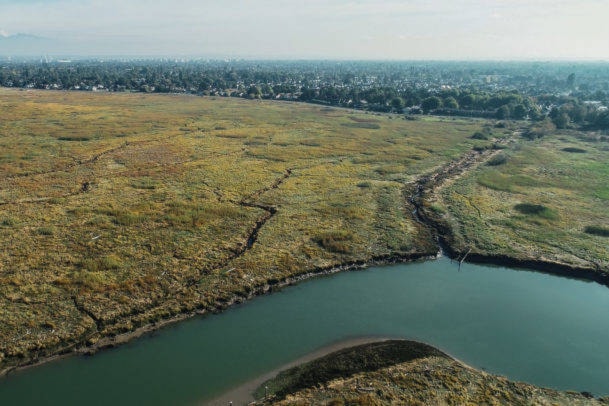More than 100 animal species in the Fraser River estuary, the largest on the Pacific coast of North America, could face extinction within a couple of decades without swift multilateral, multi-government action, a new University of British Columbia (UBC) study warns.
“There is currently no overarching plan to save them. If we don’t act quickly, many species, including species of salmon and southern resident killer whales, are likely to be functionally extinct in the next 25 years,” senior author Tara Martin, a professor of conservation science at UBC, stated in a paper published today in Conservation Science and Practice.
The biggest challenges of reversing species’ decline are climate change impacts, competing land uses from the industrial sector, impacts on migratory animals that occur outside the region, and the political willingness and stamina to adapt conservation strategies to new data.
Under a business-as-usual scenario, two-thirds of species in the estuary are predicted to have less than a 50 per cent chance of survival.
Working with 65 experts in the ecology and species-management fields, Martin and her team have identified a string of action items as well as the benefits, costs and feasibility of species recovery.
READ MORE: 13 projects protecting B.C. aquatic species at risk receive $11 million in federal funding
The plan’s success is underpinned by the formation of an environmental co-governance body of First Nations, NGOs, industry and all levels of government working together.
The plan includes strategies ranging from aquatic habitat restoration and transport regulation to green infrastructure and public land management, costing about $381 million over 25 years, or $15 million annually.
“This amounts to less than $6 per person a year in Greater Vancouver – the price of a single beer or latte,”Lead author Laura Kehoe said.
If left alone, the crisis has the potential to negatively impact many of the three million people in the Lower Mainland who live near the Fraser River and rely on the species and ecosystems for their livelihoods, culture and well-being. But the economic benefits of investing could be enormous, Martin said.
“Historically, the value of a Fraser salmon fishery exceeds $300 million a year, and whale watching is more than $26 million. If we lose thriving populations of these species, we lose these industries. Our study suggests that investing in conservation creates jobs and economic opportunities.”
The study was funded by the Marine Environmental Observation, Prediction and Response Network (MEOPAR) with additional support from The Nature Conservancy and the Liber Ero Chair in Conservation.
READ MORE: DFO announces project funding to at-risk species conservation programs
